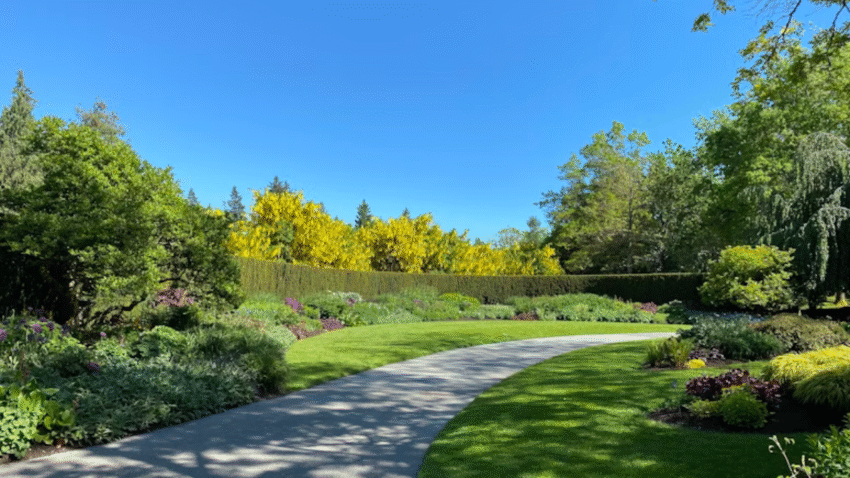Introduction
Looking for an easy, affordable way to give your grass a boost? Learning how to use Epsom salts on your lawn can help you achieve lush, green turf without harsh chemicals. This natural mineral remedy is a long-time gardening secret for correcting magnesium deficiencies, improving nutrient uptake, and giving grass that healthy, vibrant look. This complete step-by-step guide shows you exactly how to apply Epsom salts safely and effectively.
Why Using Epsom Salts Matters for a Healthy Lawn
Epsom salt is simply magnesium sulfate — a mineral compound that provides two essential nutrients: magnesium and sulfur. Magnesium helps your grass produce chlorophyll, which makes it greener and more capable of photosynthesis. Sulfur improves nutrient absorption and promotes strong root development.
When your soil is lacking in magnesium (common in sandy or acidic soils), grass may turn yellow or appear patchy despite your best fertilizing efforts. Applying Epsom salts can fix this imbalance, improve the overall health of your lawn, and even make fertilizers work more effectively. Plus, it’s inexpensive, easy to find, and safe for pets and the environment when used properly.
Step-by-Step Guide to Using Epsom Salts on Your Lawn
1. Test Your Soil First
Before adding anything to your lawn, test your soil. Magnesium deficiency isn’t universal — applying Epsom salts unnecessarily can waste money and throw off your soil balance. Pick up an inexpensive soil test kit from your local garden center or send a sample to a soil lab. If your magnesium levels are low, Epsom salts can help!
2. Choose the Right Epsom Salt
Always use plain, unscented Epsom salt (magnesium sulfate heptahydrate) with no added fragrances or oils. Garden-specific Epsom salts are the same as the kind you find in pharmacies, just packaged differently.
3. Calculate How Much to Use
A common guideline is to apply about 1–2 pounds of Epsom salts per 1,250 square feet of lawn area. Too much magnesium can interfere with calcium in the soil, so stick to recommended amounts.
4. Apply Dry or Mix With Water
There are two safe ways to apply Epsom salts:
Dry Application:
- Use a broadcast spreader to spread the granules evenly across your lawn.
- Water your lawn immediately afterward to help the salt dissolve and soak into the soil.
Liquid Application:
- Dissolve about 2 tablespoons of Epsom salt per gallon of water.
- Pour the solution into a garden sprayer.
- Evenly spray your lawn, focusing on any yellowing or patchy spots.
Both methods deliver magnesium and sulfur to the soil, but the liquid method can provide quicker results for small problem areas.
5. Time It Right
The best time to apply Epsom salts is during your lawn’s active growing season — spring or early summer for cool-season grasses, and late spring through summer for warm-season grasses. Avoid applying right before heavy rain, which can wash the minerals away.
6. Water Properly After Application
After applying Epsom salts, water your lawn deeply to help the minerals soak down to the root zone where they’re needed. Consistent moisture helps grass absorb nutrients more effectively.
7. Monitor and Repeat if Needed
Check your lawn’s progress over a few weeks. If you see greener, more vigorous growth, you’ll know your grass is responding well. If your soil still shows low magnesium levels, you can repeat the application once or twice a year as needed.
Common Mistakes to Avoid
Mistake 1: Using Without Testing Soil
Solution: Always test your soil before applying Epsom salts. Over-applying can disrupt other nutrient balances and harm your turf.
Mistake 2: Overusing Epsom Salts
Solution: Stick to recommended amounts — more is not better. Excess magnesium can leach into groundwater or interfere with other nutrients like calcium and potassium.
Mistake 3: Applying Before Heavy Rain
Solution: Check the weather forecast. Heavy rain right after application can wash Epsom salts away before they reach your grass roots.
Mistake 4: Using Scented or Additive Epsom Salts
Solution: Only use plain Epsom salt with no added fragrances, colors, or oils.
Mistake 5: Ignoring Watering
Solution: Always water well after applying Epsom salts to help dissolve the crystals and move the nutrients into the root zone.
Extra Lawn Care Tips & Hacks
✅ Combine With Fertilizer: If your fertilizer lacks magnesium, you can safely use Epsom salts alongside it. Just don’t exceed the recommended application rates for each.
✅ Spot Treat Yellow Patches: If certain areas look worse than others, try a liquid Epsom salt solution for quick, targeted treatment.
✅ Good for Gardens Too: Leftover Epsom salts? Use them on magnesium-loving plants like tomatoes, roses, and peppers for healthier growth and better blooms.
💡 Related read: Don’t miss our guide on [how to test your soil] so you know exactly what nutrients your lawn needs.
Conclusion
Epsom salts can be a simple, budget-friendly addition to your lawn care routine when used wisely. By testing your soil, applying the right amount at the right time, and watering thoroughly, you’ll help your grass grow greener, stronger, and more resilient. It’s an easy way to give your lawn a natural boost without resorting to harsh chemicals.
Bookmark this guide to remind yourself how to use Epsom salts safely and effectively — and enjoy a healthier, more vibrant lawn all season long!
